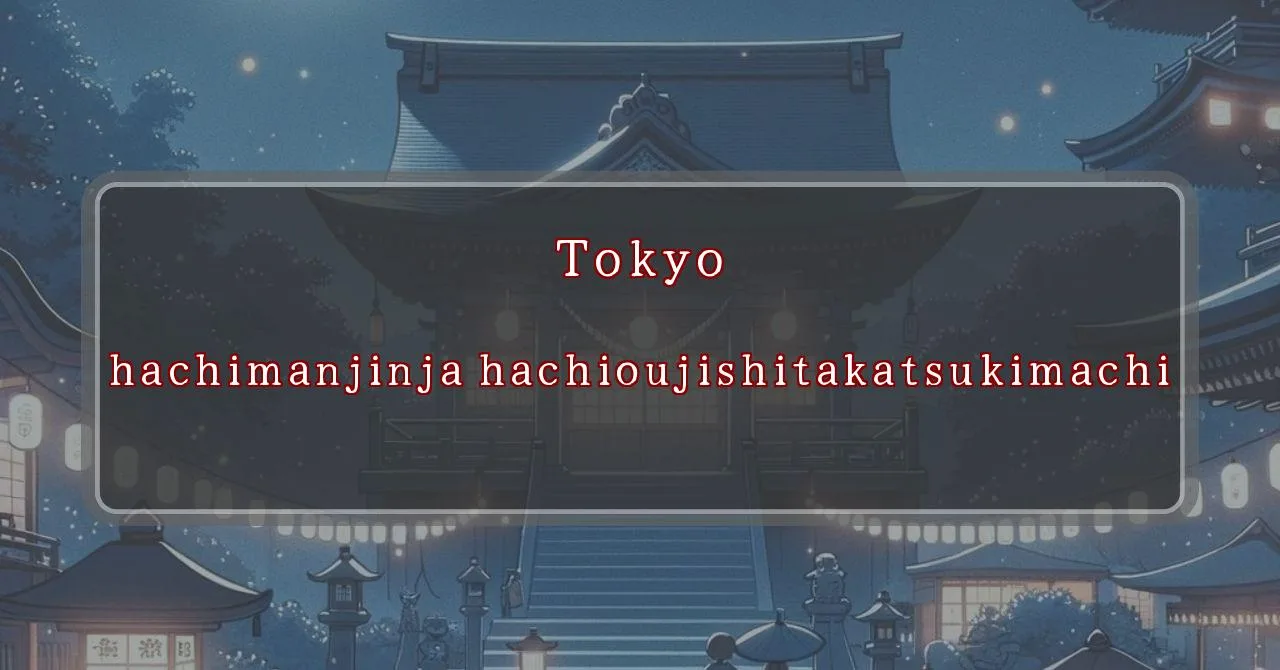Gleaming lights, divine spirits, and ancient traditions await.
Basic Information
Discover the sacred grounds of Hachiman Shrine, a place of reverence and tradition.
- Address: 1197 Takatsuki-cho, Hachioji-shi, Tokyo
- Phone Number: 042-623-0720
- Access: A 20-minute bus ride from JR Hachioji Station to “Takatsuki,” then a 1-minute walk
- Festival Days: September 29th, 2024
Main Events and Attractions of the Festival
Immerse yourself in the vibrant festivities and rich traditions of the Hachiman Shrine Festival.
Mikoshi Procession
Witness the grandeur of the mikoshi procession, where a portable shrine, adorned with intricate carvings and colorful tapestries, is paraded through the streets. Devotees carry the mikoshi with reverence, accompanied by lively music and enthusiastic cheers.
Yatai Food Stalls
Indulge in a culinary journey as you explore the rows of yatai food stalls lining the festival grounds. From classic Japanese delicacies like takoyaki and yakisoba to regional specialties and sweet treats, there’s something to satisfy every palate.
Shishimai Lion Dance
Be captivated by the mesmerizing performance of the shishimai lion dance. Dancers don elaborate lion costumes and bring the mythical creature to life with their graceful movements and rhythmic drumming. The shishimai is believed to ward off evil spirits and bring good fortune.
Kagura Performance
Experience the sacred kagura performance, a traditional Shinto ritual dance. Performers, adorned in colorful costumes, enact ancient tales and legends, accompanied by enchanting music and rhythmic clapping. Kagura is believed to bring purification and blessings to the community.
Blessings and Deities
Discover the divine blessings and deities enshrined at Hachiman Shrine.
- Deities: Hachiman Shrine is dedicated to the revered deity Hachiman, the god of war and guardian of warriors. Hachiman is also associated with agriculture, commerce, and protection from natural disasters.
- Blessings: Devotees pray for various blessings at Hachiman Shrine, including success in battle, prosperity in business, bountiful harvests, and protection from harm.
Origin and History
Unravel the rich history and ancient origins of Hachiman Shrine.
- Establishment: The exact date of Hachiman Shrine’s establishment is unknown, but it is believed to have existed since the Kamakura period (1185-1333).
- Founder: Hachiman Shrine was founded by the samurai warlord Oishi Genzaemon Sadashige, who revered Hachiman as his guardian deity.
- Historical Significance: Throughout history, Hachiman Shrine has been a significant religious and cultural center for the local community, attracting worshippers from all walks of life.
Tips and Notes for Visitors
Ensure a fulfilling and respectful visit to Hachiman Shrine with these tips.
- Dress Code: Visitors are expected to dress respectfully when visiting Hachiman Shrine. Avoid wearing revealing or casual clothing.
- Etiquette: Upon entering the shrine grounds, perform a slight bow to show respect. When approaching the main shrine building, purify your hands and mouth at the chozuya (water purification basin).
- Photography: Photography is generally permitted within the shrine grounds, but it’s important to be mindful of other visitors and avoid taking pictures during ceremonies or rituals.
Parking Information
Find convenient parking options near Hachiman Shrine.
- On-Site Parking: Hachiman Shrine has a limited number of parking spaces available for visitors. These spaces are typically filled on weekends and during festivals.
- Nearby Parking Lots: There are several public parking lots located within walking distance of Hachiman Shrine. These lots offer ample parking spaces and are a good option for those who arrive by car.
Popular Stalls and Food Carts in Recent Years
| Type of Stall | Description |
|---|---|
| Takoyaki | A staple at Japanese festivals. Characterized by a crispy outside and a creamy inside. |
| Jaga Butter | A simple yet popular snack of hot potatoes lavishly topped with melted butter. |
| Baby Castella | Small castella cakes, sweet and fluffy treats enjoyed by children and adults alike. |
| Grilled Ayu with Salt | Fresh ayu fish grilled whole with salt, a savory taste of Japanese summer. |
| Shaapin | A unique gourmet item influenced by foreign cuisine, with a chewy skin wrapping the filling. |
| Okonomiyaki | A Japanese grilled dish where you often choose your own ingredients for a personalized flavor. |
| Cotton Candy | A fluffy, sweet snack that’s extremely popular with children. |
| Chocolate Banana | A banana coated in chocolate, a fun and visually appealing dessert. |
| Kushiyaki | Various types of ingredients skewered and grilled, an easy-to-enjoy snack. |
| Yakisoba | Fried noodles mixed with a special sauce, a fast food favorite in Japan. |



